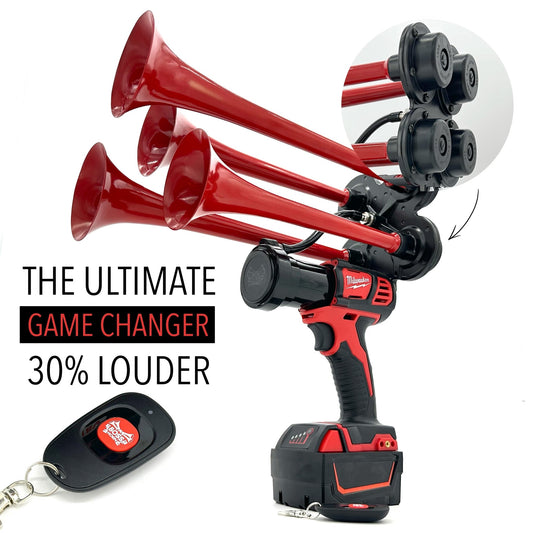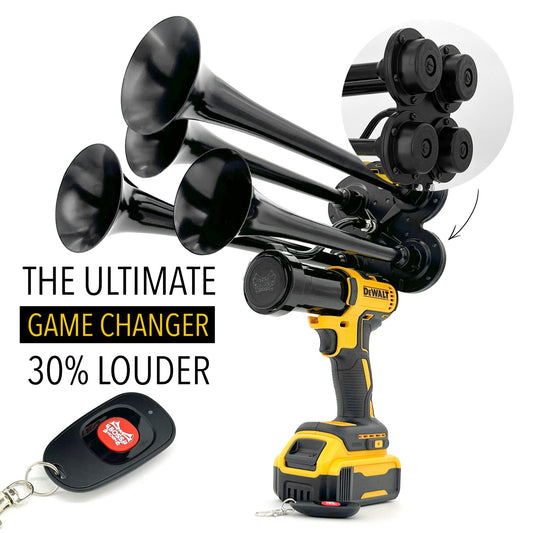Did you know that the sound produced by a car horn is equivalent to the noise level of a typical rock concert? This measure of sound intensity is a crucial aspect of ensuring safety on the roads.
Car horns have been a standard feature in vehicles since the early 1900s, initially used as a way for drivers to alert pedestrians and other vehicles of their presence. Today, car horns play a vital role in preventing accidents and communicating with other drivers in various situations. The decibel level of a car horn is carefully regulated to provide an audible warning signal without being excessively loud.
In recent years, there has been a push for car manufacturers to ensure that the sound produced by car horns is not only effective but also considerate of noise pollution concerns. Studies have shown that excessive honking can have a negative impact on public health by contributing to increased stress levels and hearing damage. By understanding the decibel level of car horns and their impact on the environment, drivers can make more informed choices about when to use them.
Discover the Sound Levels of Car Horns: What Decibel Level is Considered Safe on the Road?
Car horns are essential safety features in vehicles that emit loud sounds to alert pedestrians and other drivers of potential hazards. The decibel (dB) level of a car horn can vary depending on the make and model of the vehicle. Understanding the appropriate decibel level for a car horn is crucial to ensure it is effective in notifying others on the road. In the following section, we will delve deeper into the recommended decibel levels for car horns and why it is important to consider when choosing or adjusting your own.
Decibels (dB) and Car Horns
When it comes to understanding the sound level of a car horn, decibels (dB) are the unit of measurement used. Decibels measure the intensity or loudness of sound, with higher decibel levels indicating louder sounds. In the case of car horns, the dB level can help determine how audible the horn will be to other drivers and pedestrians.
Importance of dB Level in Car Horns
The dB level of a car horn is essential for ensuring that it can be heard clearly in various noise environments. A car horn with a higher dB level will be more effective in getting the attention of surrounding vehicles and pedestrians, especially in busy or noisy traffic conditions. It is crucial for car horns to meet certain dB level requirements to comply with safety regulations and ensure effective communication on the road.
Regulations and Standards
- In the United States, car horns are required to emit a sound of at least 100 dB, according to the Federal Motor Vehicle Safety Standards (FMVSS).
- It is important for car manufacturers to comply with these regulations to ensure that their vehicles meet safety standards and are equipped with audible warning devices that can effectively alert others on the road.
Statistics
According to studies, the average car horn emits a sound level of around 110-120 dB, which is comparable to the noise level of a chainsaw or a rock concert. This level of intensity is necessary for ensuring that the car horn can be heard over other ambient noises and traffic sounds, making it an essential safety feature for vehicles.
https://youtube.com/watch?v=lv8wqnk_TsA
What factors determine the loudness of a car horn?
The loudness of a car horn is influenced by various elements such as the type of horn used, the voltage supplied to it, and the design of the vehicle's electrical system. Additionally, the frequency at which the horn operates can also impact its overall loudness. It is essential to consider these factors when assessing the effectiveness of a car horn in alerting other vehicles or pedestrians in emergency situations.
1. Type of horn used
2. Voltage supplied to the horn
3. Design of the vehicle's electrical system
How does the sound produced by a car horn travel through the environment?
When a car horn is activated, the sound waves it generates propagate through the air in all directions. These waves travel outward from the source of the noise, reaching the ears of individuals who are within the vicinity of the vehicle. The speed at which sound travels through the environment can impact how quickly the alert produced by the horn is perceived by other road users.
1. Sound waves propagate through the air
2. Waves reach the ears of individuals nearby
3. Speed of sound impacts perception of the alert
What are the potential safety benefits of a loud car horn?
A loud car horn can serve as a crucial safety feature in alerting other drivers, cyclists, and pedestrians of your presence on the road. By emitting a loud and attention-grabbing sound, a car horn can help prevent accidents and mitigate potential hazards by notifying others of your intention to make a maneuver or indicate an emergency situation. It is important to use a car horn responsibly and judiciously to ensure its effectiveness in promoting road safety.
1. Notifying other road users of your presence
2. Preventing accidents and hazards
3. Promoting road safety through responsible use of the horn
How can the effectiveness of a car horn be maximized in emergency situations?
In emergency situations, it is crucial to ensure that your car horn is functioning properly and producing the desired level of sound output. Regular maintenance checks of the horn, including inspecting the wiring and connections, can help identify and address any issues that may affect its performance. Additionally, being aware of the legal requirements governing the use of car horns in your region can guide you in using the horn appropriately when necessary. By taking these proactive measures, you can maximize the effectiveness of your car horn in emergency scenarios.
1. Regular maintenance checks
2. Awareness of legal requirements
3. Maximizing effectiveness in emergency scenarios through proactive measures
What are common reasons why a car horn may not be working as expected?
There are several common factors that can contribute to a car horn not functioning as expected. Issues such as a blown fuse, faulty wiring, or a malfunctioning horn button can disrupt the electrical circuit responsible for activating the horn. Additionally, environmental factors like exposure to moisture or corrosion can impair the components of the horn, leading to a decrease in its sound output. Identifying and addressing these potential causes can help restore the functionality of the car horn and ensure its reliability when needed.
1. Blown fuse
2. Faulty wiring or horn button
3. Exposure to moisture or corrosion
Conclusion
In conclusion, a car horn typically emits sound at a level of around 110 to 120 decibels. This level of sound is enough to alert other drivers or pedestrians of a potential hazard or danger, making it an essential safety feature on vehicles. However, it is important for drivers to use their car horns responsibly, keeping in mind the potential impact of loud noise on others and the environment. Remember, safety first, always.














